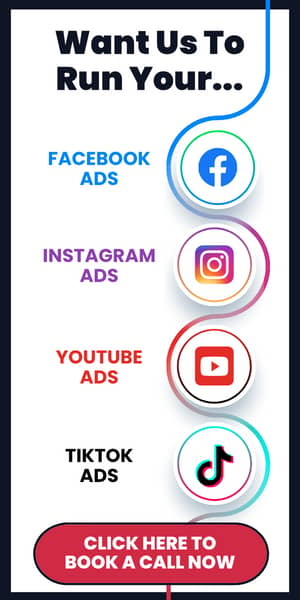When it comes to marketing, the term “funnel” is often used to describe the journey a customer takes from initial awareness to making a purchase. The top of the funnel (TOFU) is the beginning of this journey where potential customers first become aware of your brand. It’s a crucial stage in the funnel as it’s where you capture the attention of your target audience and begin to build a relationship with them.
If you’re struggling with the awareness phase of your funnel and need tips to help with customer engagement, then focusing on top of funnel marketing could be the solution. Top of funnel marketing is all about creating brand awareness and generating interest in your product or service. By targeting potential customers who are unfamiliar with your brand, you can attract them to your website or social media channels and encourage them to learn more about what you have to offer.
In this article, we’ll explore what top of funnel marketing is and why it’s important for your business. We’ll also provide you with ten top of funnel marketing tactics to help you generate leads and improve your customer engagement. Whether you’re new to marketing or looking to improve your existing strategy, these tips will help you create effective top of funnel campaigns that drive results.
You’re Struggling with the Awareness Phase of Your Funnel and Need Tips to Help with Customer Engagement
As marketers, we know that the awareness stage is the first step in the customer journey. It is the phase where potential customers first become aware of our brand, products, or services. However, getting their attention can be challenging, especially in today’s crowded digital landscape.
On top of that, we all know how important first impressions are! So we need to find the right balance between getting the right person’s attention and creating that good first impression.
Here are some tips to help you engage with potential customers during the awareness phase of your funnel:
1. Create Engaging Content
One of the best ways to grab the attention of potential customers is by creating engaging content. This can be in the form of blog posts, videos, infographics, or social media posts. The key is to create content that is relevant, informative, and entertaining.
Once you’ve grabbed a user’s attention, engaging content helps to hold their interest. It keeps them focused on your message and prevents them from bouncing away to another page or ad. This is particularly important in the awareness phase, where you’re introducing potential customers to your brand.
Engaging content effectively conveys the value of your products or services. It highlights the benefits and solutions you offer to the user’s pain points or needs. By doing so, you not only create interest but also begin to build a case for why the user should choose your brand.
Take the Warehouse Ad we did with Russ Ruffino for example.
Another example to consider would be Tai Lopez’ “Here In My Garage” ad that went bonkers!
2. Leverage Social Media Ecosystem To Improve Ad Performance
Social media is a powerful tool for reaching potential customers during the awareness phase. By creating a strong social media presence, we can engage with potential customers and build brand awareness. We can also use social media advertising to target specific audiences and increase our reach.
When running advertisement campaigns on social media, you’re going to have users who don’t click on your ad. What do they do instead? They visit your website or one of your social media channels.
If you don’t have a well built social media presence and content marketing strategy, then the likelihood of your converting those customers is very low.
We’re not saying you need to be posting 17 pieces of content every single day across all of your social media channels. Of course not!
But… If you posted once a week on your Facebook page and wrote about really interesting topics that your audience is interested in, then the likelihood of conversion would dramatically increase.
What gives a paid advertising agency the authority to talk about organic content?
It’s actually how we built our entire agency from 0 – 7 figures in just a couple of years.
We followed a very simple formula.
Get results for clients + Post about them = More clients
Here’s a post from our CEO & Founder’s Facebook page from back in 2020.

3. Create Eye-Catching Advertisements
Did you know that there are millions of advertisers running campaigns on the same social media platforms as you?
According to Social Pilot, there are 10 million advertisers on Facebook alone with 2.11 billion reachable users. That’s a ratio of 211 people per advertiser.
In highly competitive industries or markets, having an eye-catching ad can be the difference between getting noticed and getting lost in the crowd. It helps your brand stand out and gives you a competitive edge.
Eye-catching ads tend to have higher CTRs. When users are drawn to an ad because of its visual appeal, they are more likely to click on it to learn more. A higher CTR not only improves the effectiveness of your campaign but can also result in lower advertising costs on platforms that factor CTR into their ad placements.
Take the warehouse ad that we showed you earlier with Russ Ruffino. A rise in CTR from 0.73% to 0.99% actually reduced his cost per click from $9.65 to $4.49. That’s almost half the price he was paying to get users to his funnel. Another factor to keep in mind is with this ad his cost per thousand impressions dropped from $70.57 with the ad on top to $44.55 with the ad on the bottom.

4. Talk To Them Where They Are At Now
Our audience’s needs, interests, and behaviors evolve constantly. By understanding where they are at this moment, we can tailor our message to be relevant and relatable. This relevance makes our ads more likely to resonate and engage.
Our paid advertising campaigns should align with our audience’s current stage in the customer journey. In this case, they are just getting to know us and that first impression is crucial.
In order to get the best bang for our buck on the first impression, we want to take the most important elements we’d normally observe in an in-person interaction.
Let’s use an analogy of a boyfriend meeting his girlfriend’s parents for the first time to put this into perspective.
In our analogy of a boyfriend meeting his girlfriend’s parents, the “hook” becomes our warm greeting and introduction as we aim to set a positive tone for the visit.
Holding attention is all about maintaining engaging conversation throughout the interaction, ensuring that the parents stay interested and involved, which is something we, as the boyfriend, need to do.
The “call to action” at the end of the visit represents our sincere commitment to their daughter and our intention to build a loving and supportive relationship with her.
We’re inviting the parents to embrace our role in her life, just as a well-crafted advertisement invites the audience to take a specific action. In this real-life interaction, we, as the boyfriend, focus on a friendly introduction, engaging conversation, and a heartfelt expression of commitment to achieve a successful outcome.
We also want to establish credibility with the parents by filling them in on the key accomplishments we’ve been accredited to over the years so they can get a snapshot of our work ethic and history. Just like we need to do as advertisers in order to get our viewers to know, like, and trust us.
These are the core elements of what makes really good top of funnel content across all platforms. The message just needs to be tailored and personalized so it performs on each one.
What Is Top of Funnel Marketing?
At the top of the marketing funnel, potential customers are just becoming aware of a brand or product. Top of funnel marketing is the process of creating brand awareness and attracting a large audience of potential customers. This is often done through a variety of channels, such as social media, paid advertising, content marketing, and search engine optimization.
The goal of top of funnel marketing is to generate leads and build a large audience of potential customers who are interested in a brand or product. At this stage, it’s important to create content that is informative, engaging, and relevant to the target audience. This can include blog posts, infographics, videos, and other types of content that are designed to educate and inform potential customers about a brand or product.
The two key metrics we measure in paid advertising marketing strategies are cost per thousand impressions and click-through rates. We are looking at these two questions:
- How much does it cost to get people to see our ads?
- How much does it cost to get people from our ad to our sales funnel?
Overall, top of funnel marketing is an essential part of any marketing strategy. By creating brand awareness and attracting a large audience of potential customers, brands can increase their visibility, generate leads, and build a strong foundation for future marketing efforts.
10 Top of Funnel Marketing Tactics to Generate Leads
At the top of the funnel (TOFU), our goal is to attract and capture the attention of potential customers. Here are ten effective tactics we can use to generate leads and build awareness of our brand:
1. Facebook Ads – Image Ads: Image ads on Facebook are static visuals that appear in users’ news feeds or the right-hand column. They capture the audience’s attention through compelling imagery and concise copy.

2. Facebook Ads – Video Ads: Video ads on Facebook auto-play in users’ feeds. They are highly engaging and can tell a compelling brand story or showcase products/services.
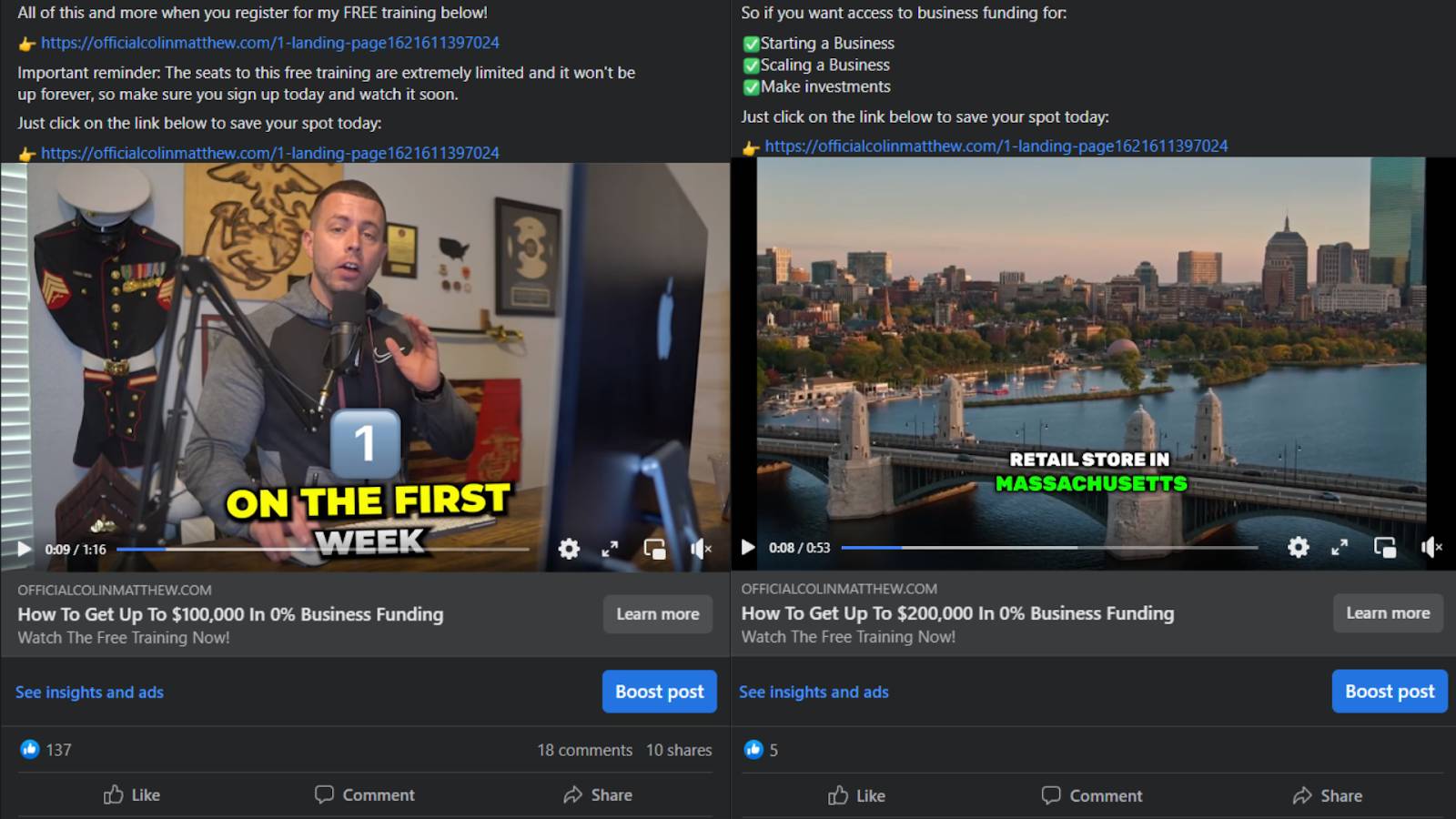
3. Facebook Ads – Reel Ads: Like TikTok, Facebook has released its own short-styled content section to see TikTok-like videos. These short videos are highly engaging and can tell viewers about your brand in 15 seconds to a minute.
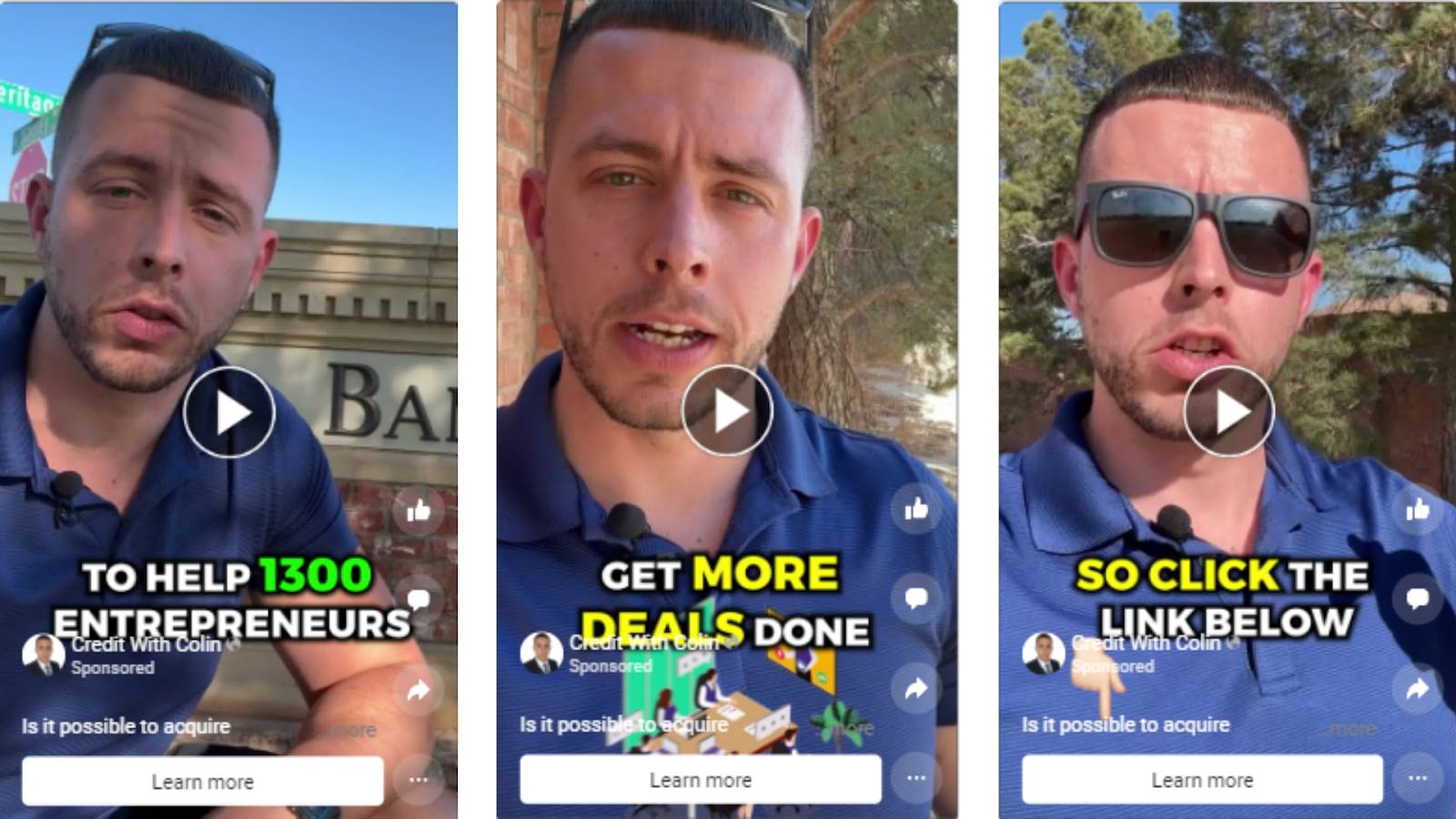
4. Search Ads – Brand Campaign: Brand campaign search ads appear at the top of search engine results pages (SERPs) when users search for your brand or related keywords. They reinforce brand recognition and direct users to your website.
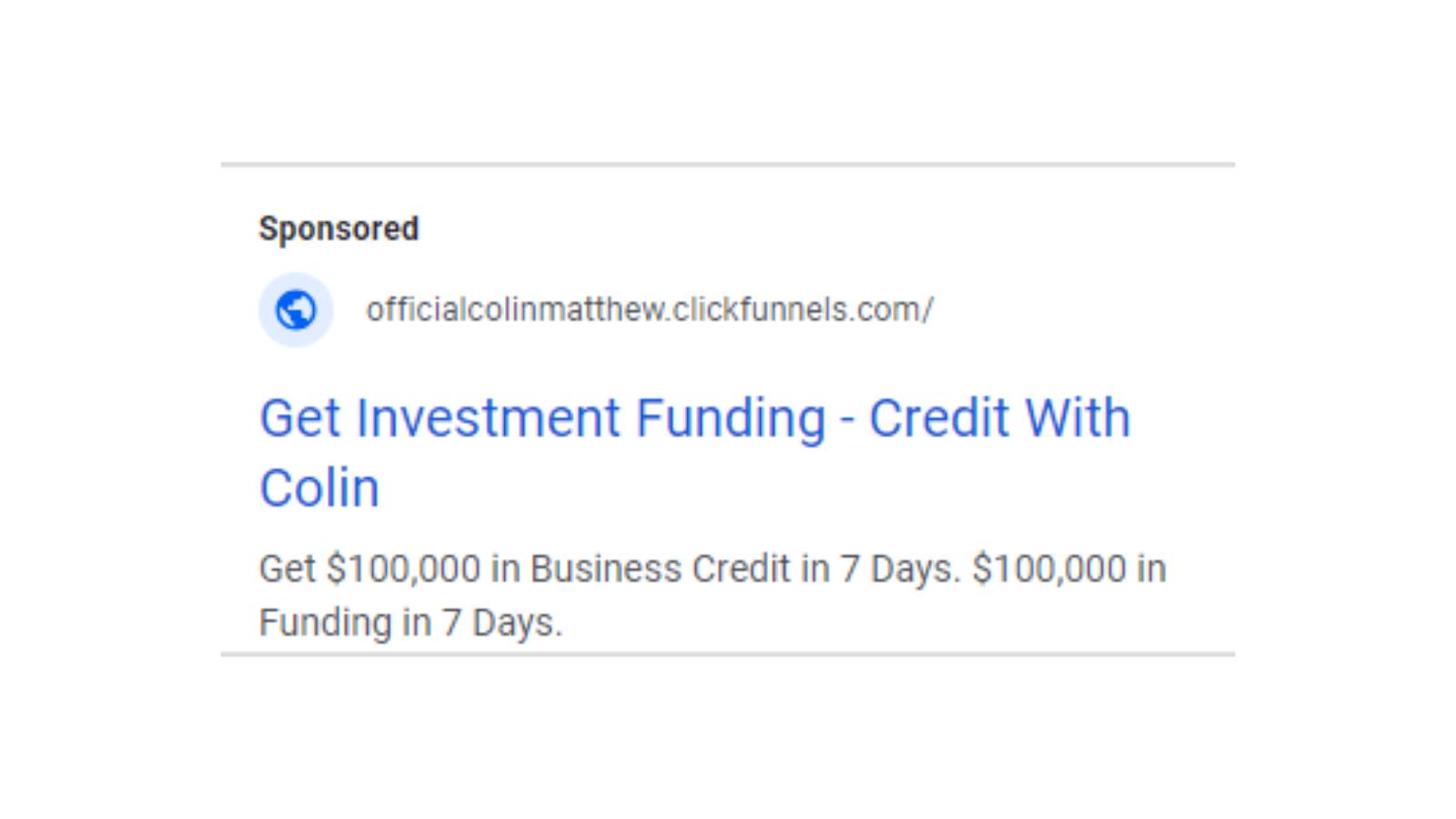
5. Search Ads – Credibility Campaign: These search ads focus on building trust and credibility by showcasing awards, customer reviews, or certifications in the ad copy. They aim to establish authority and encourage clicks.

6. YouTube Ads – In-stream Videos: In-stream video ads appear before, during, or after YouTube videos. Users have the option to skip them after a few seconds, but advertisers only pay when the viewer watches a specific duration or engages with the ad.

7. YouTube Ads – Short Ads: As with Facebook and TikTok, YouTube has also rolled out its own native TikTok section on their platform. Advertisers can showcase their brand in a short duration of time here as well.
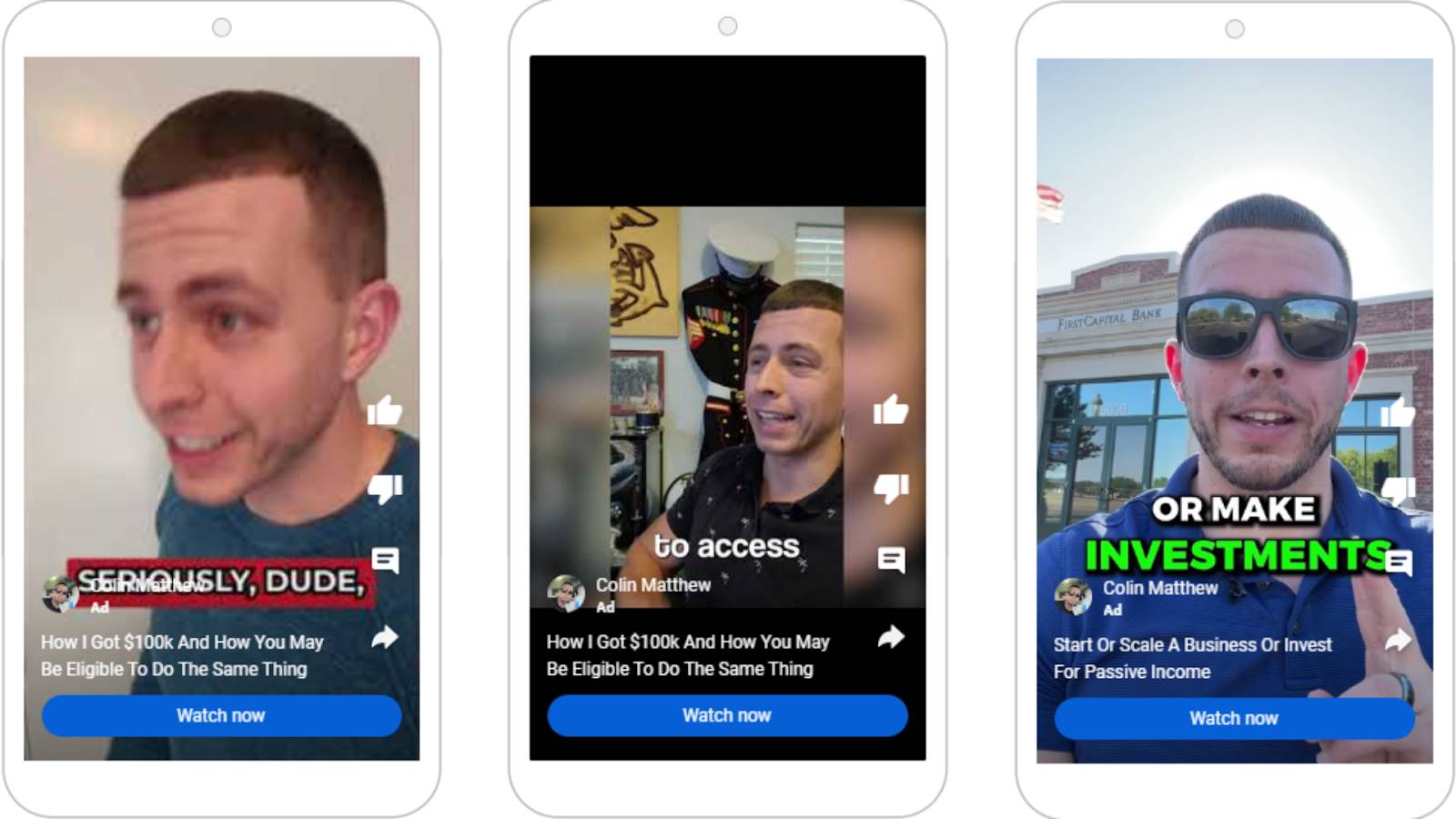
8. Instagram Ads – Image Ads: Image ads on Instagram are similar to Facebook image ads and appear in users’ feeds. They leverage visually appealing images to capture attention.

9. Instagram Ads – Video Ads: Video ads on Instagram use short videos to engage users in their feeds. They are similar to Facebook video ads but optimized for the Instagram audience.
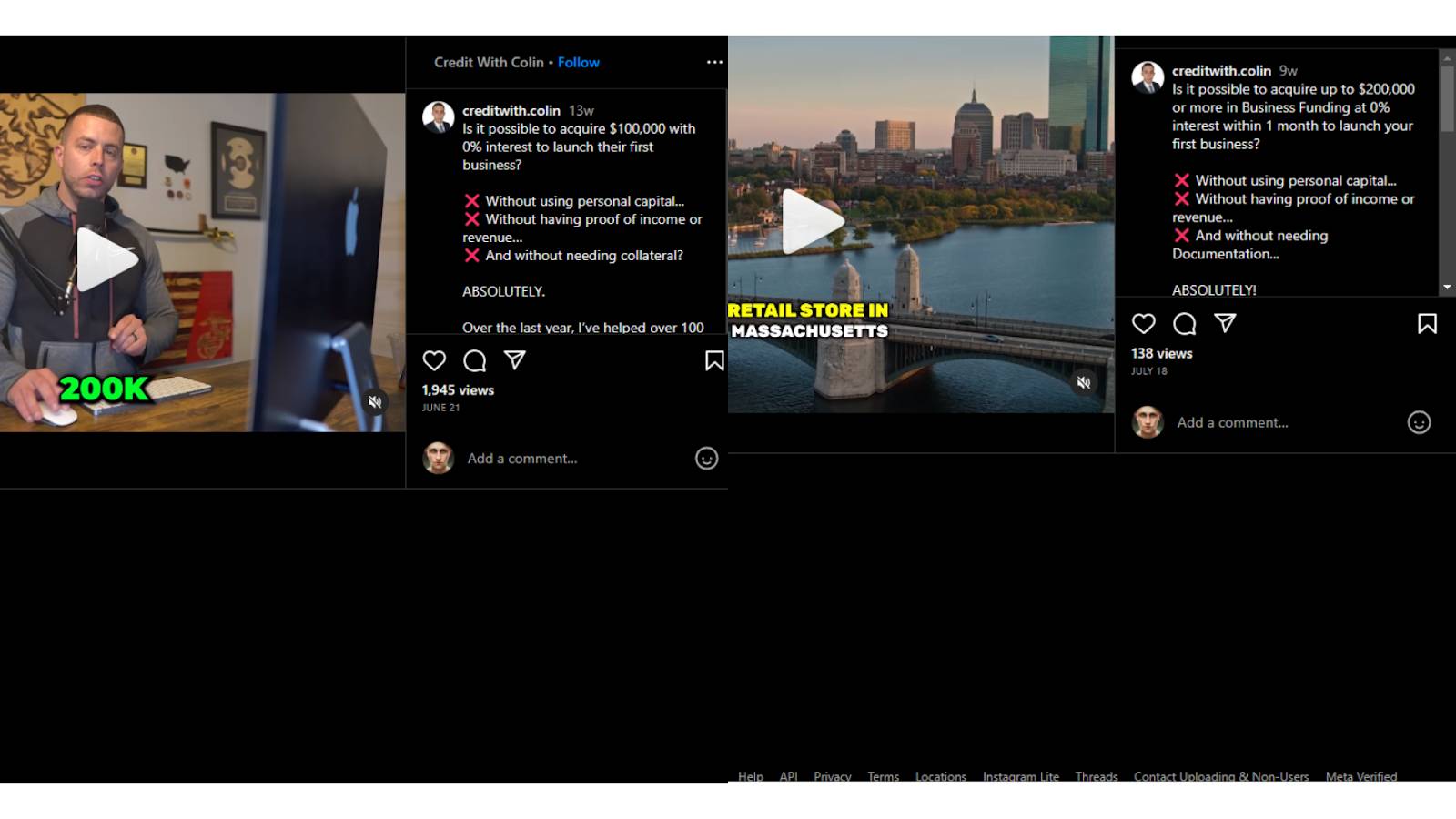
10. Instagram Ads – Reel Ads: Just like with Facebook reels, Instagram reels, and YouTube shorts but featured on Instagram’s platform.
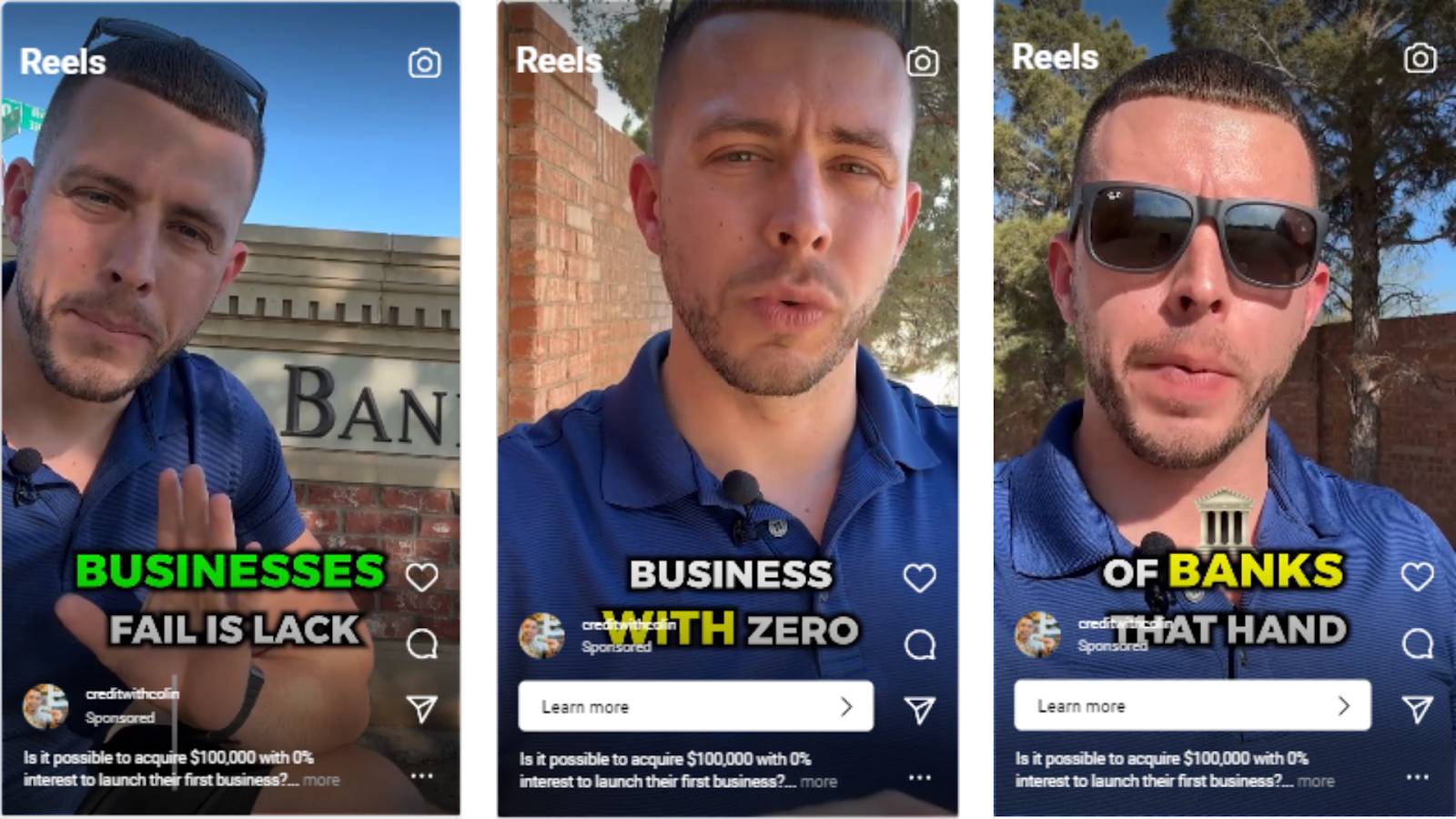
By using these top-of-funnel tactics, we can attract potential customers and start building relationships with them, setting the stage for a successful sales funnel.
Try Our Top-Performing Ad Formulas to Improve Your Top of Funnel Marketing
At the top of the funnel, the goal is to attract potential customers and introduce them to your brand. This is where top-performing ads come into play. These ads are designed to capture the attention of your target audience and encourage them to take the next step in the buyer’s journey.
To improve your top of funnel marketing, we recommend trying out the following top-performing ad formats:
Million Dollar Ad Formula
Callout Your Target Market
We effortlessly capture the attention of the right audience by scripting our ads with the correct callouts in the hook. You want to call out your target audience within the first 3-5 seconds of your advertisement.
This means saying something like “Are you a coach, author, expert, or speaker?” or “Are you a coach or consultant making $10k or more per month?”.
This instantly sets the tone for this ad and lets the viewer know who this ad is for.
Credibility Statement
Now that you have your target audience hooked, you want to tell them who you are and why they should listen to you.
Review your list of achievements and you say something like “My name is Russ and I’ve worked with over 3,500 coaches, authors, experts, and speakers. We’ve helped them produce a cumulative $1B in total revenue.”
It’s important to address the elephant in the room, which is, “Why is this guy or gal on my screen and who are they?”
Proof
They are hooked, they know who you are, and now it’s time to nail them with proof that you’ve accomplished the results they are looking to achieve in their own lives or businesses.
This way they know exactly what you’ve done and it steers your advertisement away from “this is what you should be doing” to “this is exactly what we’re doing”.
The distinction between these two frames is very important:
One screams I’m desperate for leads.
The other casually lays it out and says “Hey, here’s what we’re doing and we think it could help you too.”
Call To Action
After that, hit them with a call to action (CTA) and show them exactly where they are going to click and exactly what they will do on the next page.
Showing them exactly where they are going will not only get them familiar with the next page, but it will also set their expectations for what they’ll see on the next page.
More Proof
Then ideally you layer on even more proof to get them over the hump to take action. Saying something like “Brian went to the same page and took the same exact steps and now he’s doing over 7 figures a year.”
This will build up the notion that these tiny baby steps could actually mean helping them obtain the results they want to get in their lives.
Call To Action Again
Hit them with the call to action (CTA) again. You’re continuously building up on why it’s important they take action because that is the whole point of this ad.
We want to show them what we have to offer is more valuable than what they were just about to do.
Countdown Timer
Give them 10 seconds after the video with a countdown timer and some music.
Sometimes people are just intrigued to hear everything you have to say and those people make it all the way to the end of the ad.
You don’t want to miss these people because they are probably very interested in what you have to offer (or they just went to grab a snack). On a serious note, this is a very important part to include in your advertisement.
Here is an example of an ad we ran for Russ Ruffino from Clients On Demand which follows this exact structure.
Enchanting Storytelling Formula
If you’re ready to write a winning ad, here’s the template that we use:
Callout Your Target Market
We effortlessly capture the attention of the right audience by scripting our ads with the correct callouts in the hook.
You want to call out your target audience within the first 3-5 seconds of your advertisement.
This means saying something like “Being an executive woman is not easy.”
A sentence like this will instantly repel any men from watching your ad as well as any women who are earlier in their careers.
You’ll have executive women hooked (or whoever it is you’re trying to attract).
Calculated Story
Now that you have your target audience hooked, you want to tell a story about who you are and what you’ve been through that they can relate to.
This will include your own personal story about how you climbed into heaven from hell.
Talking about your pitfalls and the struggles that you had which your target market is also struggling with.
Epiphany Moment
There had to be that epiphany moment in your life where you realized that you were headed in the wrong direction.
What’s usually accompanied by this is called the Hero’s journey.
Throughout your hero’s journey, you had to overcome obstacles with perseverance and help from others.
Mass Desire Realization
After solving the problem personally, you realized that so many other people out there needed help with this as well.
And that’s why you are on their screen speaking to them at this moment in time.
Heaven Scenario
This is where you describe and relate to your customers in their current situation and let them know what is on the other side.
Describing to them the life they could have and creating that vision in their mind.
Call To Action
After that, hit them with a call to action (CTA) and show them exactly where they are going to click and exactly what they will do on the next page.
Showing them exactly where they are going will not only get them familiar with the next page but will also set their expectations for what they’ll see on the next page.
Proof
Then ideally you layer on proof to get them over the hump to take action.
Saying something like “My client, (Insert Name) went to the same page and took the same exact steps and now he’s (Insert Heaven Scenario Where Your Client Is).”
This will build up the notion that these tiny baby steps could actually mean helping them obtain the results they want to get in their lives.
Call To Action Again
Hit them with the call to action (CTA) again.
You’re continuously building up on why it’s important they take action because that is the whole point of this ad.
We want to show them what we have to offer is more valuable than what they were just about to do.
End Screen
Give them 10 seconds after the video with a countdown timer and some music.
Sometimes people are just intrigued to hear everything you have to say and those people make it all the way to the end of the ad.
You don’t want to miss these people because they are probably very interested in what you have to offer.
Here is an example of an ad we ran with Kate Byars following this exact formula.
How To Create Your Top of Funnel (TOFU) Strategy
We create our own top-of-funnel (TOFU) marketing strategy by carefully considering the information from this article. In the world of digital advertising and lead generation, TOFU is where we begin building relationships with potential customers. Here’s how we formulate our TOFU strategy:
1. Defining Our Audience
First, we identify and define our target audience. We understand that at the top of the funnel, potential customers are just becoming aware of our brand or product. To effectively capture their attention, we ensure our messaging is tailored to resonate with this broader audience.
2. Platform Selection
We leverage various platforms and channels for TOFU marketing. This includes paid advertising platforms such as Facebook, Instagram, Google, and YouTube. Each platform offers unique opportunities to reach potential customers.
3. Omnipresent Marketing Strategy
The best way to create a strong top of funnel marketing strategy is to be everywhere your potential customers are. Take a look at traditional television commercials. You can’t watch any channel without being exposed to “Aflac” or “Allstate” commercials.
Those guys are everywhere and for good reason. They want to keep their brand at the top of your mind. We take the same approach with our paid advertising strategy but we recommend this only if you have $10k or more per month to set aside for ads.
4. Ad Formulas
We experiment with top-performing ad formulas like the “Million Dollar Ad Formula” and “Enchanting Storytelling Formula” to craft ads that resonate with our target audience. These formulas ensure we grab attention, establish credibility, provide proof, and issue a clear call to action.
Check out the campaign structure we use in order to test new creatives and variables by clicking here.
5. Continual Testing
We understand the importance of A/B testing and refining our ad creatives and messaging. This iterative process allows us to optimize our TOFU marketing efforts for the best results.
Learn how we keep new ad creatives in rotation by clicking here.
6. Metrics Tracking
We measure the success of our TOFU marketing strategies using key metrics like cost per thousand impressions (CPM) and click-through rates (CTR). These metrics help us evaluate the cost-effectiveness of our ad campaigns and the efficiency of our lead-generation efforts.
In order to get accurate tracking for the middle of the funnel (MOFU) and bottom of the funnel (BOFU), we use a tracking platform called Hyros which you can learn more about here.
By applying these tactics and strategies, we aim to attract potential customers, create brand awareness, and lay the foundation for successful lead generation and customer acquisition in our marketing funnel.
Learn More About Client Accelerators Omnipresent Top of Funnel Approach
By the way, we implement all of these strategies for our clients and more. If you want to learn more about our omnipresent paid advertising approach, then schedule a call with our team.
We’ll dive deep into your current marketing strategy, identify the bottlenecks that you’re facing now, and show you exactly how we would overcome them ourselves.
Giving you a precise and personalized Growth Plan for your present-moment business needs.
Our goal is to create win-win relationships with everyone we meet and help even more people who are struggling with paid advertising to crush it in their marketplace.
So far we have helped 250 clients with their paid ads and we want you to be next as long as we’re a good fit to work together.
You can check out a few of our testimonials by clicking here.


